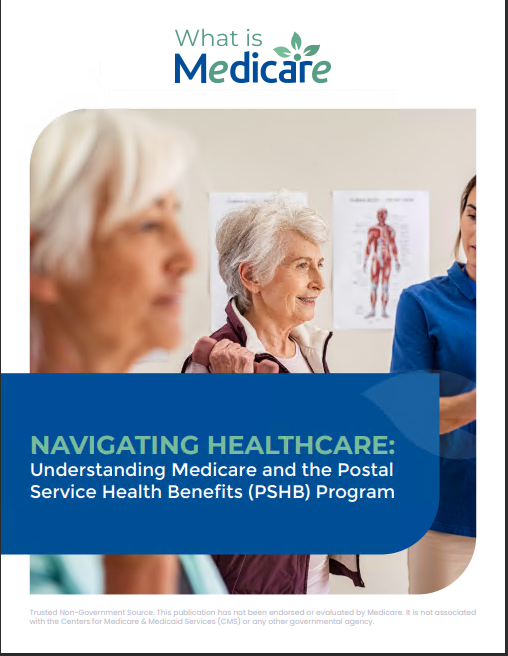Key Takeaways
- Medicare’s Annual Enrollment Period (AEP) offers an 8-week opportunity to review and adjust healthcare options for the upcoming year.
- Changes made during AEP from October 15 to December 7 will take effect on January 1 of the following year.
AEP and Your Medicare Options: Why This 8-Week Period Could Change Your Healthcare Costs
Medicare’s Annual Enrollment Period (AEP) is a critical time for beneficiaries to assess their healthcare needs. Running from October 15 to December 7 each year, this period offers an opportunity for individuals to make important adjustments to their Medicare coverage. The choices made during this timeframe will take effect on January 1 of the following year, meaning this is the time to ensure that your health coverage aligns with your needs and budget for the coming year. Understanding how AEP works, and the options available, can lead to better healthcare and cost savings.
What Is the Medicare Annual Enrollment Period (AEP)?
The Annual Enrollment Period (AEP) allows Medicare beneficiaries to modify their healthcare coverage. This is distinct from the Initial Enrollment Period (IEP) when you first become eligible for Medicare. During AEP, you can:
- Switch from Original Medicare (Part A and Part B) to a Medicare Advantage Plan (Part C) or vice versa.
- Change Medicare Advantage Plans.
- Enroll in or switch Medicare Prescription Drug Plans (Part D).
- Drop a Medicare Advantage Plan and return to Original Medicare.
These options allow flexibility in tailoring your healthcare plan to fit your medical and financial needs for the upcoming year.
Medicare AEP vs. Open Enrollment Period (OEP)
AEP is often confused with the Medicare Open Enrollment Period (OEP). While both periods offer the chance to make changes, they serve different purposes. AEP is specifically for switching Medicare plans, while OEP (from January 1 to March 31) allows beneficiaries who already have Medicare Advantage to switch plans or return to Original Medicare but does not permit enrollment into a new Part D plan unless certain conditions apply.
| Period | Purpose | Dates |
|---|---|---|
| Annual Enrollment Period (AEP) | Change Medicare plans, enroll or switch Part D | October 15 – December 7 |
| Open Enrollment Period (OEP) | Switch Medicare Advantage plans, drop and return to Original Medicare | January 1 – March 31 |
Why Is AEP So Important?
AEP is the most comprehensive window for beneficiaries to assess their current plans and choose the best possible options for the following year. This 8-week period can significantly affect healthcare costs, including premiums, copays, and out-of-pocket expenses. If your healthcare needs have changed or if your current plan no longer meets your expectations, this is the time to make changes without facing penalties or restricted options.
Factors to Consider During AEP
When reviewing options during AEP, it’s important to evaluate various factors:
- Medical Needs: Consider if you anticipate changes in your healthcare needs, such as surgeries, therapies, or new prescriptions.
- Provider Network: Make sure your preferred doctors and specialists are covered under the plan you choose.
- Medication Costs: Drug prices vary between Medicare Advantage and Prescription Drug Plans. Verify if your prescriptions are included and what the copays will be.
What Can You Change During AEP?
AEP is a period when you can make several key changes to your Medicare plan. Knowing your options is essential for making informed decisions.
Switching to Medicare Advantage (Part C)
Medicare Advantage Plans provide an alternative to Original Medicare and often include additional benefits like dental, vision, and hearing. These plans may also come with varied out-of-pocket costs, so reviewing the structure of premiums and deductibles is crucial. If your current Original Medicare setup isn’t meeting your needs, switching to a Medicare Advantage Plan during AEP could be beneficial.
| Option | Description |
|---|---|
| Original Medicare | Provides hospital (Part A) and medical (Part B) coverage |
| Medicare Advantage | Offers all benefits of Parts A and B plus additional services like vision, dental, and sometimes prescription drug coverage |
Modifying or Enrolling in Medicare Prescription Drug Plans (Part D)
If you’re currently enrolled in a Part D plan but have seen an increase in your prescription costs, AEP is the perfect time to switch plans. You can compare different plans to find one that better suits your medication needs. Alternatively, if you don’t have a Part D plan and want to add prescription coverage, this is your chance to do so without a late enrollment penalty.
How to Prepare for AEP
Preparation is key to making the most of the AEP period. Taking the time to review your current plan and comparing it with other available options ensures that you make an informed decision.
1. Review Your Current Plan
Start by looking at your current Medicare plan’s annual notice of change (ANOC). This document outlines any upcoming changes to your plan, such as cost adjustments or modifications to coverage. Understanding these changes can help you decide whether it’s time to switch or modify your plan.
2. Compare Plans
Medicare’s official website (Medicare.gov) offers tools to compare plans available in your area. Compare factors like premiums, coverage details, out-of-pocket costs, and the availability of your preferred healthcare providers and medications. Licensed insurance agents can also provide personalized assistance, ensuring that you have the most suitable options for your needs.
3. Check the Star Ratings
Medicare assigns star ratings to plans based on factors like customer service and quality of care. Checking these ratings during AEP can help you choose a plan that has a proven track record of reliability and quality.
| Star Rating | Interpretation |
|---|---|
| 5 stars | Excellent |
| 4 stars | Above average |
| 3 stars | Average |
| 2 stars | Below average |
| 1 star | Poor |
Tips for Making the Most of AEP
To optimize your choices during AEP, consider these tips:
- Document Your Healthcare Needs: Keep a record of your medical history, ongoing treatments, and medications to compare how various plans address these needs.
- Plan Ahead: Don’t wait until the last minute; start exploring options early in the AEP period so that you have time to consult resources and make informed choices.
- Seek Professional Advice: Licensed insurance agents can provide expert guidance, ensuring that you understand all available options. This consultation can be particularly helpful if you have complex healthcare needs or multiple medications.
Understanding the Costs Involved
While AEP provides a chance to optimize your healthcare coverage, understanding the associated costs is important. Medicare beneficiaries are often responsible for various expenses, such as premiums, deductibles, and copays, which can vary widely across different plans.
Comparing General Costs of Medicare Options
| Medicare Plan Type | Average Monthly Premium | Deductible | Out-of-Pocket Limit |
|---|---|---|---|
| Original Medicare | Varies based on income | Part A: $0 for most, Part B: Annual | No out-of-pocket maximum |
| Medicare Advantage Plan | Varies, may include drug coverage | Varies based on plan | Usually has a defined limit |
| Medicare Prescription Drug Plan (Part D) | Varies based on plan | Varies based on plan | Not applicable |
By comparing costs and coverage, beneficiaries can better understand how their choices during AEP might affect their financial and healthcare situation in the upcoming year.
Making Changes and Finalizing Decisions
Once you’ve reviewed your options and compared costs, it’s time to make your selection. During AEP, you can change your Medicare plan by visiting Medicare’s official site or consulting with a licensed insurance agent. Ensure that all paperwork is completed accurately to avoid any delays in coverage.
Make the Right Choice for Your Healthcare Future
Taking the time to understand and utilize the Medicare Annual Enrollment Period can lead to optimized coverage that fits both healthcare and financial needs. The key is preparation, plan comparison, and seeking professional advice when necessary.










